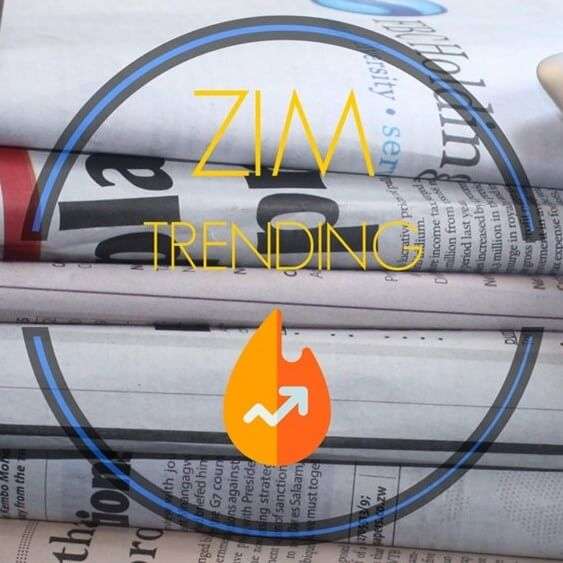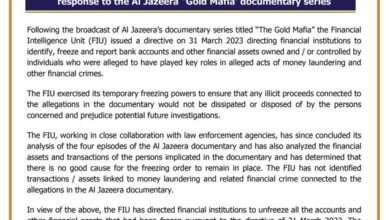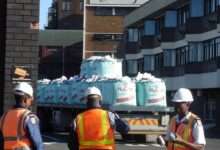ZESA, ZESCO Face Penalties for Overusing Kariba Water
ZRA reviewing the Water Purchase Agreements, with the view to introduce heavy penalties.

ZESA Holdings and its Zambian sister ZESCO face hefty financial penalties for failure to adhere to water allocation threshold for electricity generation at Kariba.
This comes as Zambian President Hakainde Hichilema this week revealed a plan to engage President Emmerson Mnangagwa to discuss the Kariba water crisis including “optimal use of the shared resource.”
Hichilema revealed this after his tour of the Kariba North Power station complex this week where he also heard the threats by the Zambezi River Authority (ZRA) to penalise ZESA and ZESCO. ZRA chief executive officer Munyaradzi Munodawafa, said the authority was reviewing the Water Purchase Agreements, with the view to introduce heavy penalties. He said:
“Utilities pay US$0.048 per kilowatt hour (kW/h) for water. This cost of water for electricity generation is not a cost driver for the utilities. So, they can overuse it (water) and pay the (low)penalty. So, we are looking at the Water Purchase Agreements so that we can increase the penalty just to encourage them to save the water. Right now, it’s not encouraging for them to stick to their allocations.”
ZRA is a joint venture outfit owned by the governments of Zimbabwe and Zambia responsible for the management of the Zambezi River waters and the Kariba Dam complex which comprises the dam wall and water storage reservoir and other associated ancillary facilities such as lake levels and river in-flows monitoring equipment.
The threat by ZRA comes after ZESA, which operates Kariba South Hydroelectric Power Station, exceeded its water allocation by 1.39 billion cm³ above the water allocation for the year 2022. ZESCO, wholly owned by the Government of Zambia, runs the Kariba North Bank Power Station.
The two power plants have been generating cheaper and reliable electricity for Zimbabwe and Zambia at an average cost of US$0.02 per kW/h while the four thermal power plants in Hwange, Bulawayo, Harare and Munyati, have been generating power at an average cost of between US$0.08 per kW/h and US$0.16 per KWh.
ZRA allocated 22.50 billion cubic metres of water for the year 2022 to ZESA and ZESCO, which share equally the water resources at the complex. But, ZESA surpassed its allocation, utilising 23.89 billion cm³, while the Kariba North Bank Power Station, run by ZESCO, maintained its allocation. Experts indicated that failure to adhere to allocation thresholds result in steeped drawing down of the live storage of water.
They highlighted that if water in the Kariba Dam depletes to below the stipulated minimum threshold of 475.5 metres above sea level, it will not be possible to turn turbines to generate electricity, meaning the water in the dam may only be used for recreation and fishing purposes.
This may also result in power utilities shutting down their power plants in Kariba. Currently, the water level at the Kariba Dam is 23 centimetres above the minimum operating level, when it should be eight metres, according to official data obtained from ZRA this week.
Munodawafa raised the red flag over the water depletion last year in June. But, he said ZESA misled ZRA amid revelations the power utility failed to stick to its promises to stop power generation at Kariba South Hydroelectric Power Station by October.
“We discussed with them (ZESA) and they said by the beginning of September (2022), we are going to have two thermal generators (at Hwange Power Station). Then from October going forward, we will stop generating at Kariba to ensure that the levels are maintained. At that time, ZESCO did follow the proper programme and everything was okay. Come October, we still had the same problem and then from there we made a lot of representations and (warning) letters.”
Munodawafa is vigorously pushing to have control over ZESA and ZESCO facilities. He said the Council of Ministers, consisting of the ministers of energy and finance of Zimbabwe and Zambia, has since directed that ZRA should have such powers to shut down the two power generators at Kariba Dam for disregarding water allocation thresholds. Munodawafa said:
“One of the problems ZRA faces in terms of this regulatory authority is that we have no control over the inland facilities where for example we notice that ZESCO is not generating electricity in accordance to what we agreed, we can’t close them. Unfortunately, when we were mandated, one of the issues we did not get was the control of the inland facilities. So, we can only shout and shout and it will be difficult (to enforce our directives because they may choose not to cooperate and we won’t have powers to do anything to them).
“However, the Council of Ministers (of Energy and Finance of Zimbabwe and Zambia), has directed that we discuss with the utilities so that we have that control over inland facilities. If we have that control, obviously, when we see that there is misuse (of water for electricity generation), we just go and shut (the power utility that exceeds its allocation).”
ZESA and ZESCO have been struggling to meet demand for their respective countries owing to reduced power generation at Kariba. This has resulted in the two southern African countries experiencing crippling power cuts lasting close to 18 hours daily.
According to the ZRA rule curve, if things are normal, Kariba Dam water level starts to go up in January. Zimbabwe contributes only 20% of the inflows into the Kariba Dam. There are only two rivers which supply water into the lake namely Sanyati and Gwayi rivers. But, these rivers are hardly flowing owing to poor rainy seasons across Zimbabwe. About 80% of the water flowing into the Zambezi River comes from Zambia, Angola and the Democratic Republic of Congo, among other catchments in the north of the flood pains.
But, the inflow into the lake normally comes in March or April because water from the sources in the north passes through Barotse plains also known as wetlands. The Barotse plains suck huge amounts of water first and then release it into the Zambezi River when saturated at the peak of the rainy season around February and March.
Usually, a strong flow of the mighty Zambezi River is noticed in Victoria Falls, which is about 120 kilometres upstream, around March and April each year. Apparently, this is when Kariba Dam receives its optimum inflows around May each year, with the dam’s water levels reaching optimum levels around June.
Due to low water levels in the dam, Kariba South Hydroelectric Power Station, which has been supplying more than 70% of electricity to Zimbabwe, has been generating less than 250MW, according to generation statistics obtained from the Zimbabwe Power Company, a power generation unit of ZESA Holdings, from a possible 1 050MW.
Consequently, ZESA is rolling out crippling unscheduled power cuts. Unstable power supply causes companies to incur heavy losses as most are interrupted thereby affecting the quality of products. Some processes are also delayed or aborted resulting in failure to meet deadlines and targets for many companies.
Some companies are also forced to turn to expensive alternative sources of energy such as diesel generators. The situation, especially in Zimbabwe, has also been exacerbated by machine breakdown at its four thermal power stations in Hwange, Harare, Munyati and Bulawayo.
Built between 1946 and 1958, the thermal power stations have since reached their design life, which is 25 years and now require either life extension measures or complete replacement. According to ZESA generation statistics for this week, Harare, Munyati and Bulawayo power stations were not generating electricity yesterday due to breakdowns while Hwange and Kariba was generating 415MW and 163MW respectively.


























